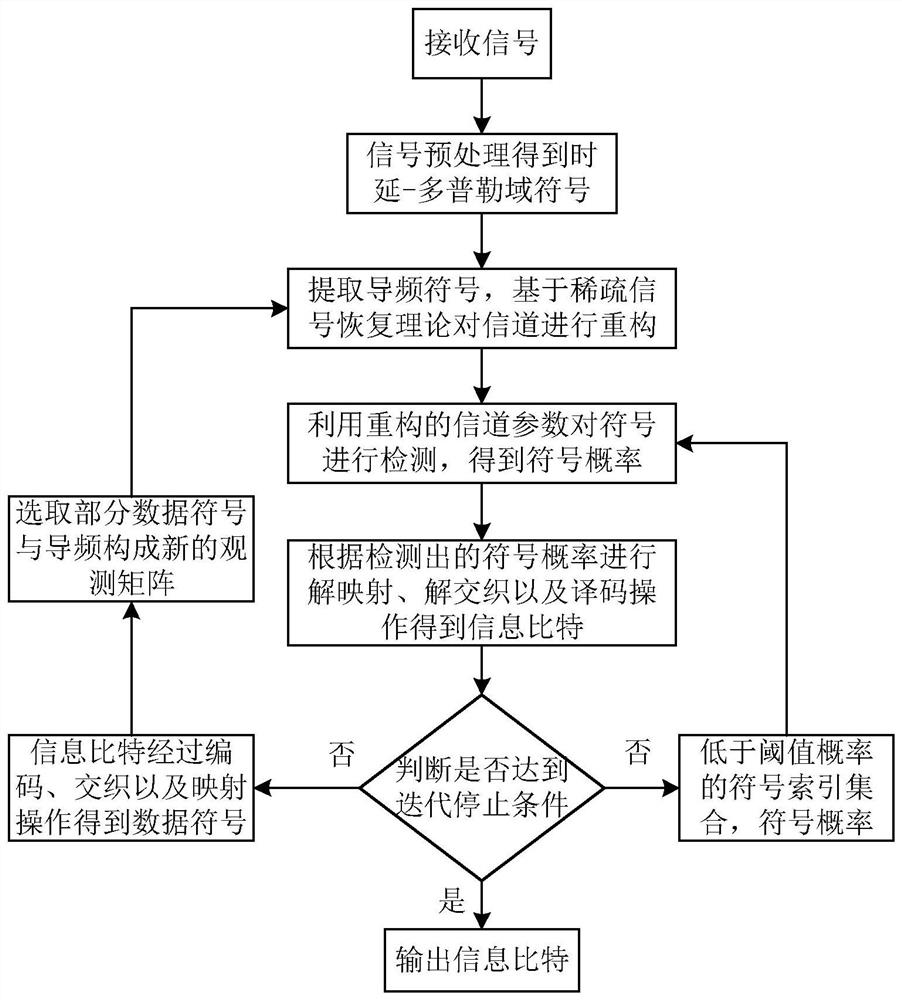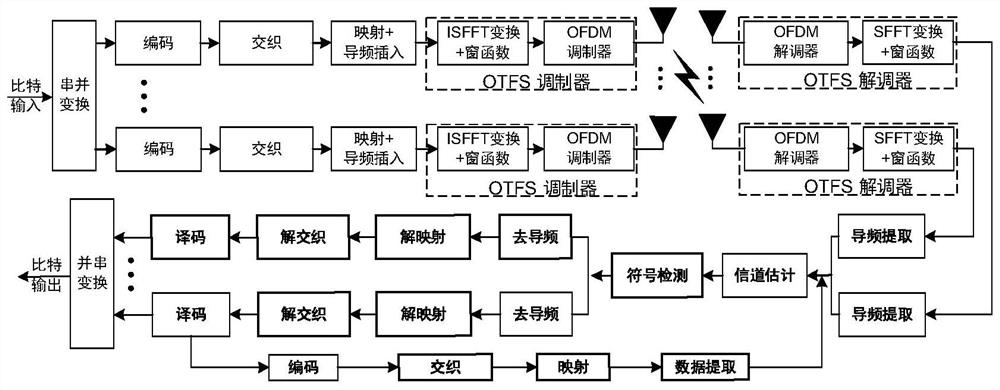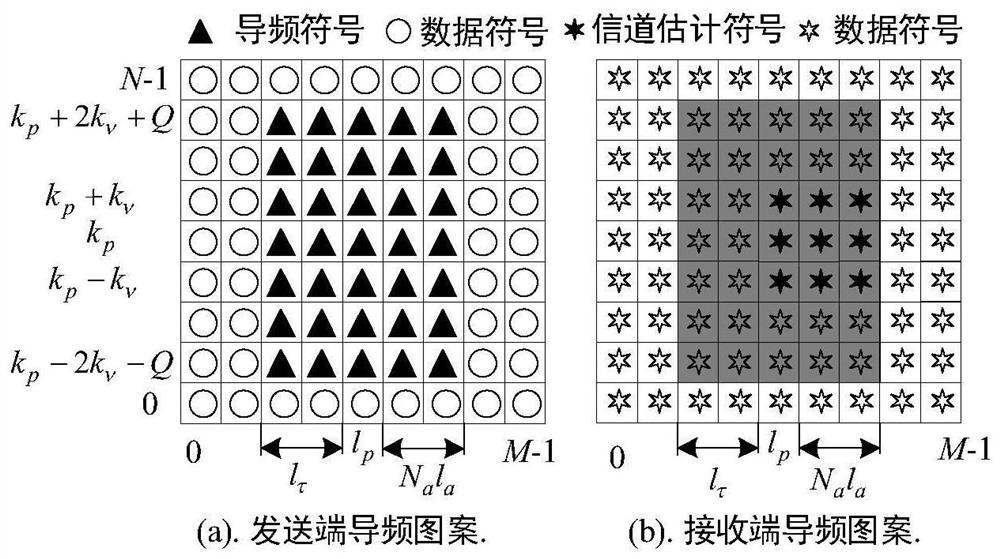Channel estimation and symbol detection method based on orthogonal time-frequency-space joint
A joint channel estimation and channel estimation technology, applied in the field of joint channel estimation and symbol detection, can solve the problems of high computational complexity and low system performance
- Summary
- Abstract
- Description
- Claims
- Application Information
AI Technical Summary
Problems solved by technology
Method used
Image
Examples
Embodiment Construction
[0047] The embodiments of the present invention will be described in detail below with reference to the accompanying drawings. The method of the present invention comprises the following steps:
[0048] Step 1, pilot symbol placement: establish a mathematical model according to the relationship between the input and output of the MIMO-OTFS system, convert the channel estimation into sparse signal reconstruction by analyzing the mathematical model, and place a small number of pilots in the delay-Doppler domain. The frequency symbols are used for channel parameter estimation at the receiving end, and the receiving end of the MIMO-OTFS system is figure 1 shown, where the number of transmit and receive antennas is N t =N r =N a , first, the input bits are first encoded, interleaved, and modulated and mapped by quadrature phase shift keying (QPSK) to obtain time-delay-Doppler domain symbols. According to the relationship between input and output, the pilot symbol placement patte...
PUM
 Login to View More
Login to View More Abstract
Description
Claims
Application Information
 Login to View More
Login to View More - R&D
- Intellectual Property
- Life Sciences
- Materials
- Tech Scout
- Unparalleled Data Quality
- Higher Quality Content
- 60% Fewer Hallucinations
Browse by: Latest US Patents, China's latest patents, Technical Efficacy Thesaurus, Application Domain, Technology Topic, Popular Technical Reports.
© 2025 PatSnap. All rights reserved.Legal|Privacy policy|Modern Slavery Act Transparency Statement|Sitemap|About US| Contact US: help@patsnap.com



